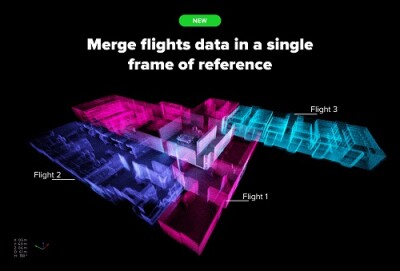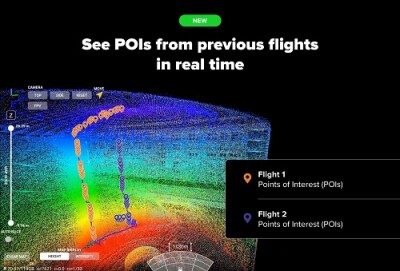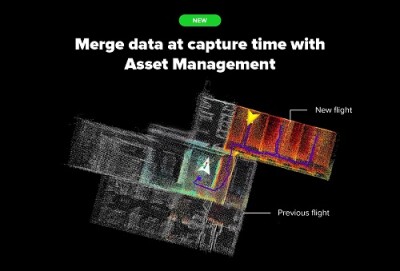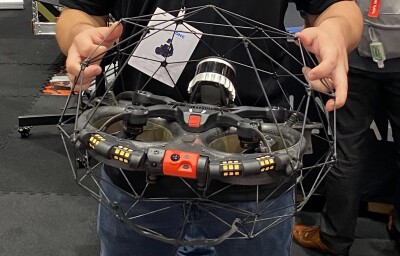Since its introduction in May 2022, Flyability’s Elios 3 drone has proven to be an important tool for drone-based inspections. The UAV’s reliability and adaptability have made it a popular choice in fields such as mining,
This past week, Flyability expanded the capabilities of its flagship drone with the introduction of a new software extension, “Asset Management,” for enhancing the way operators work with drone-derived data. According to Flyability, this new capability “redefines the traditional way of looking at drone data, transitioning from flight-by-flight reading to asset-wide reporting.” In addition, Flyability stated, Asset Management “simplifies the
To learn more about the software extension, Commercial UAV News spoke with Eloise McMinn Mitchell, Content & Communications Manager at Flyability. We discussed the concept of “asset management,” the software extension’s impact on commercial drone applications, and what’s next for Flyability.
Commercial UAV News: What are the main features of the software extension for Elios 3? How can they be used to improve or expand commercial drone operations?
 Eloise McMinn Mitchell: As drone data is now being used for digital twins and highly detailed 3D models, the necessity for clearly organized data that can easily be manipulated is growing. For that reason, we wanted to create a better way to manage drone data. Our new software is part of data capture and management from flight to post-processing. So, with the Asset Management extension, data is organized by asset and inspection
Eloise McMinn Mitchell: As drone data is now being used for digital twins and highly detailed 3D models, the necessity for clearly organized data that can easily be manipulated is growing. For that reason, we wanted to create a better way to manage drone data. Our new software is part of data capture and management from flight to post-processing. So, with the Asset Management extension, data is organized by asset and inspection
Commercial UAV News: How do you define “asset management”?
Eloise McMinn Mitchell: It’s a process of having an overview of your asset—an ability to reference existing data and gather new information to determine the asset’s real-time condition. It’s this data that helps avoid or detect issues early, as well as streamline maintenance. With drones, it used to be that you would organize data flights by flight, rather than by asset, which is why this software extension is such a gamechanger.
 We’re expecting the Asset Management extension to unlock new, simpler ways of managing data that provide better clarity to inspectors. This will be particularly useful for inspecting large assets where multiple flights are necessary, as well as repeat projects where a service provider may return to the same site repeatedly to gather data.
We’re expecting the Asset Management extension to unlock new, simpler ways of managing data that provide better clarity to inspectors. This will be particularly useful for inspecting large assets where multiple flights are necessary, as well as repeat projects where a service provider may return to the same site repeatedly to gather data.
Commercial UAV News: What impact does asset management have on commercial drone operations?
Eloise McMinn Mitchell: It makes it easier to manage and see data - both in-flight and afterwards.
With Cockpit, you can now organize flights by asset and by inspection, automatically merge data during capture, and see POIs from previous flights in the LiveMap.
In Inspector, you now have your flights organized by asset and inspection, making it easier to clearly see where you’ve repeatedly inspected an asset and we will introduce the possibility to
Commercial UAV News: How was the software extension developed? Who worked on the project? Did you collaborate with customers or use customer suggestions or feedback during the process?
Eloise McMinn Mitchell: The software was developed in-house with multiple teams and first presented to the public
Commercial UAV News: How is the software being used in the “real world”? Can you describe any use cases?
 Eloise McMinn Mitchell: We did a first case study with TEXO, who used Asset Management to navigate through 9,200 near-identical racking systems at a sugar refinery. Here, they could use the drone to do the inspections in one rack out of 5, meaning the other 4 could still be working during data collection—which is part of the joy of working with the Elios 3. The overall work didn’t cause the refinery owners to have any unscheduled downtime, instead, they got all the results they needed with minimal disruption to work. In addition, the results were so clear that they asked for access to our Inspector software to be able to see
Eloise McMinn Mitchell: We did a first case study with TEXO, who used Asset Management to navigate through 9,200 near-identical racking systems at a sugar refinery. Here, they could use the drone to do the inspections in one rack out of 5, meaning the other 4 could still be working during data collection—which is part of the joy of working with the Elios 3. The overall work didn’t cause the refinery owners to have any unscheduled downtime, instead, they got all the results they needed with minimal disruption to work. In addition, the results were so clear that they asked for access to our Inspector software to be able to see
Commercial UAV News: What’s next for Flyability?
Eloise McMinn Mitchell: We just launched our latest payload, the ultrasonic thickness (UT) probe, for our flagship Elios 3 drone. Now, we’re taking that payload around the world so people can see it for themselves and get trained with it. We’ll be hosting a UT launch in Denver, Colorado on May 1-2.
And now that we’ve had major launches of a new payload and new software features, we’re focusing on bringing the technology
Click here to register for a webinar about Flyability’s new Asset Management Software Extension.















Comments